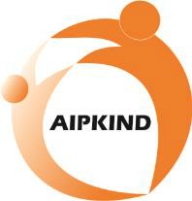Effect of Freezing Duration and Thawing Temperature on Fat Content in Expressed Breast Milk
Abstract
One of the methods to keep working mothers able to provide breast milk is freezing. However, the processing carried out on breast milk can affect the nutritional content in it. Therefore, this study aims to see the effect of freezing duration and thawing temperature on fat content in expressed breast milk. This research was experimental research with pretest and posttest design. Breast milk from one mother was divided into 45 samples based on freezing duration and thawing temperature. The dependent variable in this study was the fat content of expressed breast milk, while the independent variables were freezing duration and thawing temperature of expressed breast milk. The fat content test used was the GPO-PAP method. Then the data were analyzed using one-way anova test and paired t-test. The average expressed breast milk fat content from initial levels, freezing 3 days, 7 days and 14 days and thawed at 4oC, 25oC and 37oC respectively were 178,679, 176,604, 175,849, 173,962, 71,698, 67,736, 66,415, 68,302, 66.038, 66.226 mg/dL. Based on the paired t-test, there was a decrease in fat content which had implications for the freezing duration of 7 days and 14 days with p=0.000 (p<0.05). Meanwhile, based on the results of the one-way anova test, there was no difference in fat content based on variations in thawing temperature (4oC, 25oC, and 37oC) with p>0.05. As a conclusion, there is an effect of freezing duration on fat content in expressed breast milk, whereas there is no effect of thawing temperature on fat content in expressed breast milk.
Keywords
Full Text:
PDFReferences
Kementerian RI., “Peraturan Bersama Menteri Negara Pemberdayaan Perempuan, Menteri Tenaga Kerja dan Transmigrasi, dan Memberi Kesehatan Nomor 48/Men.PP/XII/2008, Nomor PER.27/MEN/XII/2008, Nomor 1177/Menkes/PB/XII/2008 tentang Peningkatan Pemberian ASI Selama Kerja.” Kementerian RI, Jakarta, 2008.
Pemerintah RI., “Peraturan Pemerintah RI No 33 Tahun 2012 Tentang Pemberian Air Susu Ibu Eksklusif,” Pemerintah RI. Pemerintah RI, Jakarta, 2012.
F. A. Wijaya, “Nutrisi Ideal untuk Bayi 0-6 Bulan,” CDK - J., vol. 46, no. 4, pp. 296–300, 2019.
L. Goran, Breastfeeding and Breast Milk - from Biochemistry to Impact. Switzerland: Family Larrson-Rosenquist Foundation, 2018.
S. Y. Kim and D. Y. Yi, “Components of human breast milk: from macronutrient to microbiome and microRNA,” Clin. Exp. Pediatr., vol. 63, no. 8, pp. 301–309, Aug. 2020, doi: 10.3345/CEP.2020.00059.
I. Putri Sari, A. Ariadi, and E. Yerizel, “Efek Lama Penyimpanan Asi Terhadap Kadar Protein dan Lemak yang Terkandung Didalam ASI,” J. Kesehat. Andalas, vol. 5, no. 1, pp. 56–59, 2016, doi: 10.25077/jka.v5i1.444.
Kemenkes RI, Profil Kesehatan Indonesia 2018, vol. 1227. 2018.
IDAI, “Memerah dan Menyimpan Air Susu Ibu (ASI),” Jakarta, No.: 006/Rek/PP IDAI/V/2014, 2014. [Online]. Available: https://www.idai.or.id/professional-resources/rekomendasi/memerah-dan-menyimpan-air-susu-ibu-asi.
A. Eglash and L. Simon, “ABM Protocol ABM Clinical Protocol #8: Human Milk Storage Information for Home Use for Full-Term Infants, Revised 2017,” vol. 12, no. 7, pp. 390–395, 2017, doi: 10.1089/bfm.2017.29047.aje.
Q. Pham, P. Patel, B. Baban, J. Yu, and J. Bhatia, “Factors Affecting the Composition of Expressed Fresh Human Milk,” Breastfeed. Med., vol. 15, no. 9, pp. 551–558, 2020, doi: 10.1089/bfm.2020.0195.
S. Bransburg-Zabary, A. Virozub, and F. B. Mimouni, “Human milk warming temperatures using a simulation of currently available storage and warming methods,” PLoS One, vol. 10, no. 6, pp. 1–13, 2015, doi: 10.1371/journal.pone.0128806.
M. H. Kim et al., “Macronutrient Analysis of Human Milk according to Storage and Processing in Korean Mother,” Pediatr. Gastroenterol. Hepatol. Nutr., vol. 22, no. 3, pp. 262–269, Apr. 2019, doi: 10.5223/PGHN.2019.22.3.262.
C. Gao, J. Miller, P. F. Middleton, Y. C. Huang, A. J. McPhee, and R. A. Gibson, “Changes to breast milk fatty acid composition during storage, handling and processing: A systematic review,” Prostaglandins, Leukot. Essent. Fat. Acids, vol. 146, pp. 1–10, Jul. 2019, doi: 10.1016/J.PLEFA.2019.04.008.
S. Mane and R. P. Mahajan, “The effect of Storage conditions on nutritional quality of donor human milk in milk bank practice,” no. August 2019, pp. 1–8, 2021, doi: 10.7439/ijbar.v10i8.5169.
D. Handa et al., “Do thawing and warming affect the integrity of human milk?,” J. Perinatol., vol. 34, no. 11, pp. 863–866, 2014, doi: 10.1038/jp.2014.113.
P. Arum and A. Widiyawati, “Breast Milk Nutrient Content In Different Storage Temperatur and Duration,” Ilm. Inov., vol. 16:(03), no. October, pp. 0–4, 2019.
F. C. Mamuaja, Lipida. Manado: Unsrat press, 2017.
S. Titin Aryani, Fitria Siswi Utami, “Studi Pengaruh Suhu Penyimpanan terhadap Kadar Asam Lemak Omega-3 pada Air Susu Ibu (ASI),” vol. 4, no. 1, pp. 1–10, 2017.
R. A. Lawrence and R. M. Lawrence, Breastfeeding: a guide for the medical professional. Elsevier Health Sciences, 2021.
S. Handayani, D. Soekmawaty Riezqy Ariendha, and Y. Suryatim Pratiwi, “Lama Penyimpanan Air Susu Ibu (ASI) Memengaruhi Kandungan Zat Gizi Dalam ASI,” J. Kesehat. Qamarul Huda, vol. 7, no. 2, pp. 24–28, Dec. 2019, doi: 10.37824/JKQH.V7I2.2019.122.
K. Sri et al., “Pengaruh Lama Penyimpanan Asi Di Freezer Terhadap Kadar Karbohidrat, Protein Dan Lemak Yang Terkandung Dalam Asi,” Wal’afiat Hosp. J., vol. 3, no. 2, pp. 148–155, Dec. 2022, doi: 10.33096/WHJ.V3I2.87.
DOI: https://doi.org/10.31983/jkb.v13i1.9494
Article Metrics
Refbacks
- There are currently no refbacks.
Abstracted/Indexed by:
Jurnal Kebidanan by http://ejournal.poltekkes-smg.ac.id/ojs/index.php/jurkeb is licensed under a Creative Commons Attribution-ShareAlike 4.0 International License.
View My Stats aw
.png)
.png)




.png)





